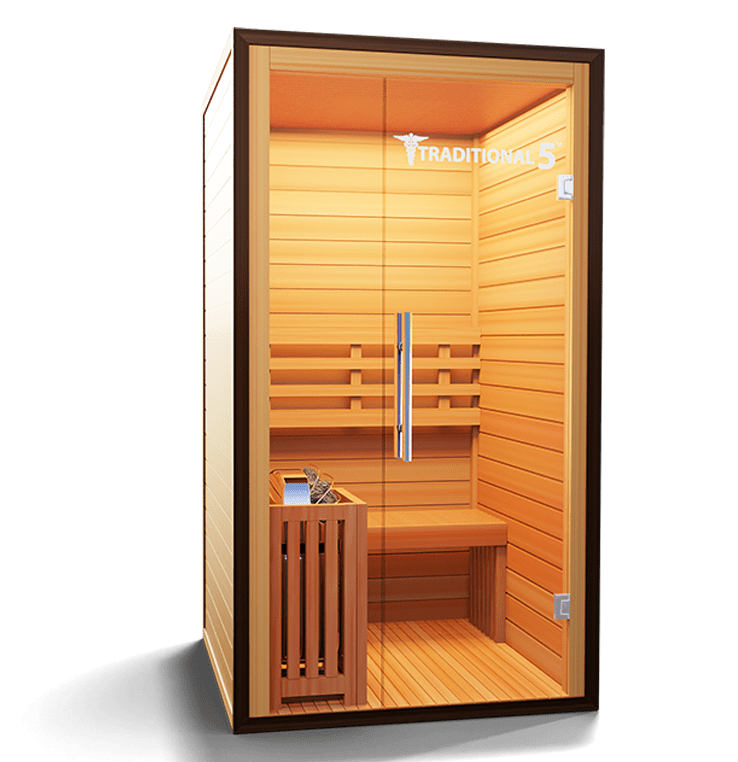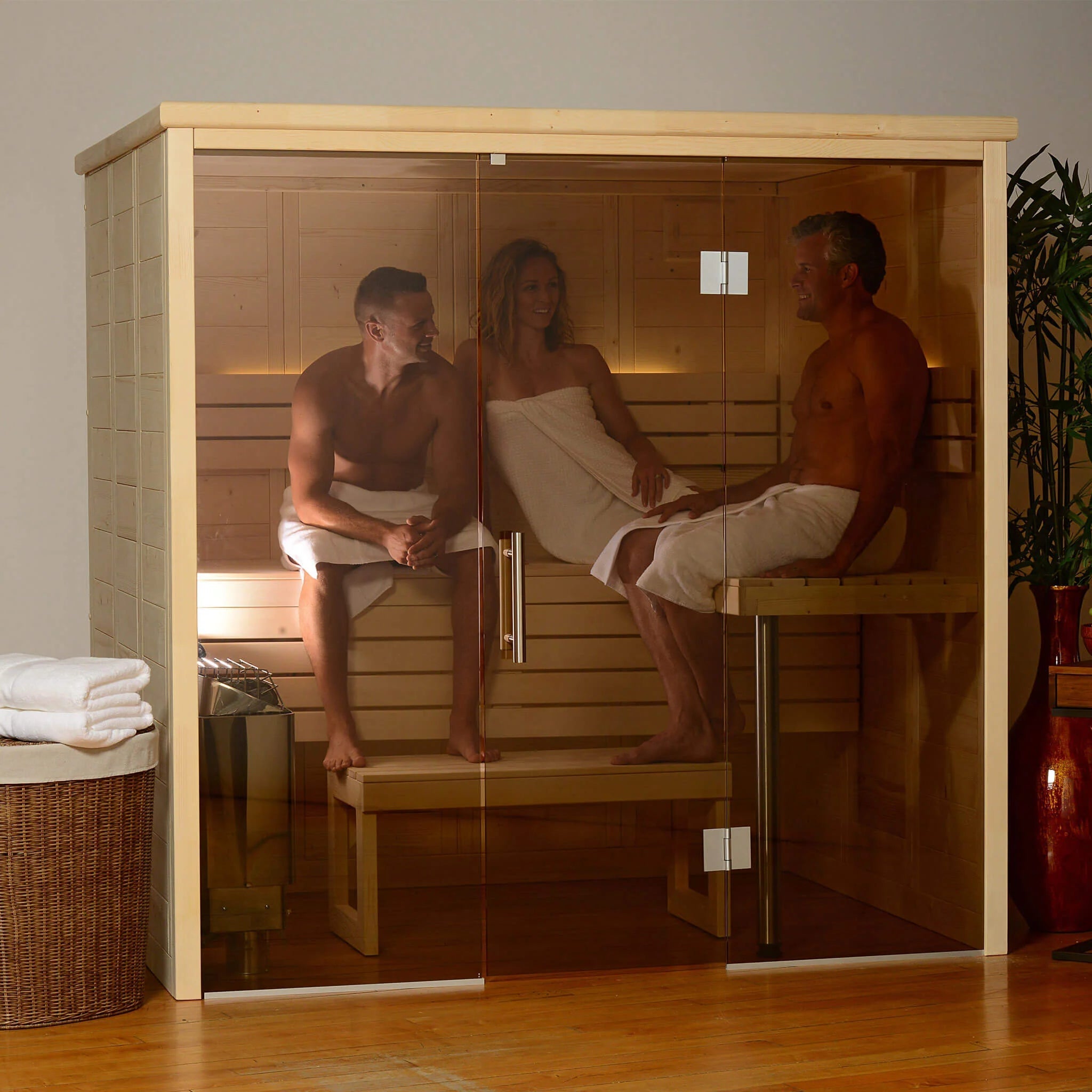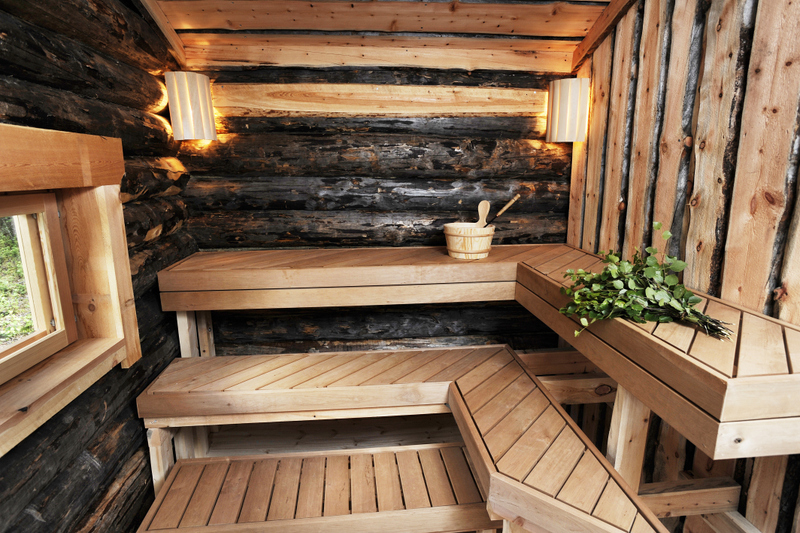Facts About Traditional Sauna Uncovered
Facts About Traditional Sauna Uncovered
Blog Article
The Ultimate Guide To Traditional Sauna
Table of ContentsThe Best Strategy To Use For Traditional SaunaUnknown Facts About Traditional SaunaGetting My Traditional Sauna To WorkThe smart Trick of Traditional Sauna That Nobody is Talking AboutThe Definitive Guide to Traditional Sauna
A lot of the weight shed in a sauna is water loss and is re-gained upon rehydrating. Nevertheless, without an uncertainty sauna can be an essential part of a healthy weight-loss program. To consider the distinctions between typical and IR saunas, I will certainly separate these into verifiable, theoretical, and made distinctions.Therefore, the most popular point in the saunawhich is at the ceiling straight above the sauna heateris normally between 185 and 190 F. Claims that a typical sauna surpasses 200 F is merely not real and not applicable for electric saunas sold in the United States. The temperature for a far-infrared sauna is generally set in between 120 and 140 F; nonetheless, unlike the typical sauna, the goal in and IR room is not to achieve a heat.

When a traditional sauna has actually been properly heated up, the sauna wall surfaces are warm, the air temperature has actually achieved established temperature level and the rocks are extremely warmed. As an interesting side note, the heated wall surfaces and the rocks are giving off far-infrared heat, incorporated with the warmed air, to create an "covering warm".
The Traditional Sauna Statements
When the high temperature level is attained, the aspects cycle on and off to keep the high temperature. A lot of standard sauna users enjoy pouring water over the rocks to develop steam to raise sauna moisture degrees. The advantages of pouring water over the rocks include: making the space more comfy, dampening the nasal flows, and permitting the usage of aromatherapy by blending vital oils with the water.

When the energy enters the body, it triggers the body temperature to raise and inevitably causes perspiration. In an infrared sauna it's vital for the emitters/heaters to continue to be on virtually regularly. Given that there is no mass of rocks to retain warm, the sauna will certainly cool down if the emitters shut down.
Some Known Questions About Traditional Sauna.
As pointed out over, the sauna bather in an infrared room desires to place himself in front of operating emitters to obtain optimal advantage from the heat. The home heating time for the two rooms can check it out be extremely various, depending upon just how the spaces are used. For a traditional sauna, a bather needs to enable 30-40 minutes for the room to attain a wanted temperature and to effectively pre-heat the rocks.

A well created sauna will usually attain a temperature level of 150-160 F in regarding 30-40 minutes. For hotter temperatures, the room might require to warm for a longer period.
To some, 15 mins was "squandered" while the infrared energy heated up the wood panels instead than heating up a body, while others discover a pre-heated room to be much more comfortable and think a raised beginning temperature is essential to begin sweating. The size of suggested usage for each area is about the very same (10-15 mins per session); nonetheless, due to the lower air temperature levels and the capability to feel the results of infrared warm quicker than a conventional sauna, it is not unusual for a person to spend an overall of 20-30 minutes in an infrared sauna.
10 Easy Facts About Traditional Sauna Explained

The ordinary cost per kWH of electricity in the U.S. is approximately $0.11, so a 4.5 kW heating system will cost approximately $.50 to compete one hour, if the heater runs continually for one hour. Typically a sauna heater will run for 75% of the very first hour and 50% of succeeding hours on since the elements cycle once the set temperature is achieved.
A 2 person far-infrared area is generally literally smaller sized than a standard sauna, usually regarding 4' x 4' or smaller sized. The IR heating system is usually 1.5-1.7 kW using a 120 volt 15 amp plug-in service. Considering that the room can be utilized faster than a sauna space, we will certainly assume the area is used for to of an hour including warmth up time.
Ultimately, there is a rarely click to read reviewed difference look at this now in the social experience between both areas. While our society has actually shed some of the social benefit of the conventional sauna experience, it can be really socially satisfying (Traditional Sauna). From household time in the sauna, to heart-felt conversations with better halves, to sauna partiesthe typical sauna experience can cause intimate socializing
The smart Trick of Traditional Sauna That Nobody is Talking About
Most higher end infrared areas consist of colored light treatment, noise systems and full-glass fronts.
Report this page